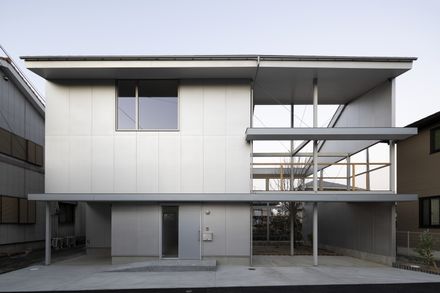House In Kurume
ARCHITECTS
Goya Schröder & Associates
STRUCTURAL DESIGN
Sugimura Structural Design
DESIGN
Tota Goya, Jan-jakob Schröder
MANUFACTURER
Lixil , Nichiha Siding, Panasonic, Skk, Sanwa, Toolbox, Topa Cork
CONSTRUCTION
Haraguchi Kensetsu
PROGRAM / USE / BUILDING FUNCTION
Detached House
LANDSCAPELANDSCAPE
Taiyo Green
PHOTOGRAPHS
Mariko Yasaka
AREA
133 M²
YEAR
2022
LOCATION
Kurume, Japan
CATEGORY
Houses
In search of an alternative Japanese house type in urban density. This detached house represents a contemporary Japanese urban dwelling while employing conventional wooden frame construction and reinterpreting the traditional typology of the Townhouse (Machiya) and Farmhouse (Nōka) of the region.
Located in a residential area near the center of Kurume City in the south region of Japan, the site has an area of less than 200m2, which is the result of subdivisions to sell the overpriced land, a situation that is common in Japan today.
Because of the proximity to the neighbors, houses on such narrow sites tend to be too exposed and thus the curtains remain closed or executed too introverted with few small windows.
Still, we pursued here discreet openness, by controlling the sizes and positions of openings properly.
The interior space is placed on the west side of the site while the garden and balcony are on the east side, which allows the garden more open to the neighbors. The wood structure covers both the interior and the exterior and adjusts openings and screens.
The plan configuration follows the traditional manner of dividing a rectangle into rooms by the Japanese measuring system.
The plan consists of 9 squares of 9-japanese-foot in length inside and 6 more squares outside.
By raising the main living space to the upper floors, spacious, well-lit rooms with privacy and continuous exterior space with a mountainous backdrop are achieved.
It also reduces damage in flooding from the Chikugo River, which is 500 m away. The large high window on the south lets warm sunlight in the winter while the eave prevents it in the summer.
The silver panels on the facade bring a lightness to the exterior, reflecting the greenery of the garden and the changing colors of the sunlight, as well as harmonizing with the industrial Kurume cityscape.























